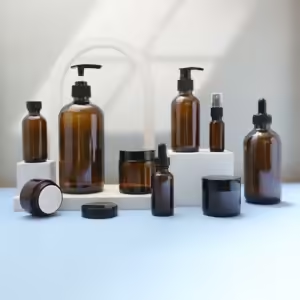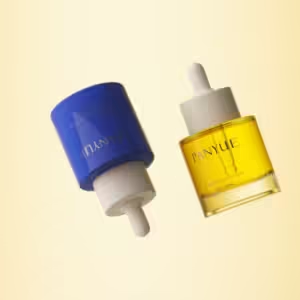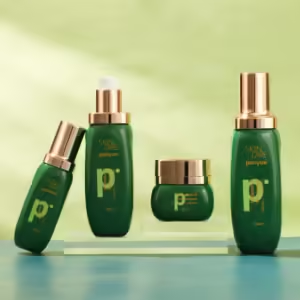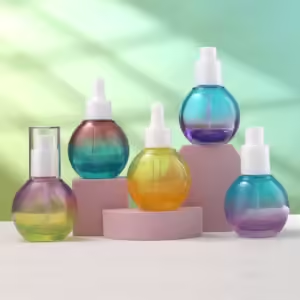Glass bottles are a common packaging choice for various products such as beverages, pharmaceuticals, cosmetics, and household items. Glass bottles offer a premium appearance and the ability to protect the integrity of the product. Однако, the quality of glass bottles doesn’t just depend on appearance. Consistent thickness is a key factor in the durability and visual appeal of glass packaging. When the surface thickness of glass bottles varies, it can lead to a host of problems, both for the manufacturer during the production process and for the consumer when handling the product.
В этом разделе, we’ll look at why uneven thickness of glass bottles occurs, how uneven thickness affects glass bottles, and what can be done to prevent uneven thickness of glass bottles.
What causes the uneven thickness of glass bottles?
Glass molding process
The glass molding process is the first step in glass production. Uneven filling of the mold when injecting molten glass into the mold, and inaccurate molds can lead to inconsistencies in the thickness of the final finished glass bottle.
Temperature distribution during cooling
After the glass is molded, it cools and solidifies rapidly. During this stage, if the cooling process is not uniform, different parts of the bottle will cool at different rates, resulting in variations in thickness. Uneven heat distribution can cause some parts of the bottle to shrink or solidify more quickly, which can lead to thicker or thinner glass walls, making them more susceptible to defects such as cracking or breakage.
Quality of raw materials
The quality of the raw materials used in the production of glass bottles directly affects the uniformity of thickness. The consistency of the glass batch is critical to ensuring uniform thickness. Variations in the glass batch, such as differences in material composition, can lead to uneven distribution of the glass, which in turn can lead to uneven thickness. Also, impurities in the glass, such as air bubbles, dirt, or foreign matter, can cause interruptions in the flow of molten glass, resulting in uneven filling of the mold.
Mold Wear
As molds wear, they may become misaligned or some parts of the mold cavities may lose precision, resulting in uneven thickness of the glass bottles.
Machine calibration and automation issues
Improperly calibrated machines can lead to uneven pressure, incorrect glass flow, or inaccurate filling, all of which can lead to thickness variations.
And during high-volume production, small errors in automation can have a significant impact on consistency. Например, a slight misalignment of the mold, uneven pressure distribution, or incorrect glass feed rate can lead to bottle thickness variation.

The effect of uneven thickness on glass bottles
Affect the durability of glass bottles
Bottles with inconsistent thickness are more likely to crack or break during processes such as filling or transportation. Filling machines typically apply pressure during the filling process, and bottles with thinner areas may fail under this pressure. In addition, rough handling or stacking pressure during transportation can lead to breakage, especially if the thinner areas of the bottle are subjected to pressure or impact.
Affecting the aesthetics of glass bottles
Uneven thickness can lead to glass defects such as bubbles, and distorted or warped surfaces visible on the finished product. These defects are often more noticeable in clear glass bottles, which can spoil the sleek, polished look that many brands strive for.
Impact on Glass Bottle Filling
During the bottle-filling process, the machine relies on the consistency of the shape and size of the bottle. Variations in thickness can make the filling process difficult, leading to improper fill levels or inconsistent flow rates. The machine may have difficulty distributing the product evenly, resulting in overfilled or underfilled bottles.
Affecting the seal of glass bottles
If the thickness of the glass is not uniform, sealing may become an issue. Thinner areas of the bottle may lead to improper sealing, as the cap may not fit securely, leading to a risk of product leakage or potential contamination. Weak seals may compromise product safety and lead to spills or product evaporation over time.
Liquid leakage can be a significant risk if the inconsistent thickness of glass bottles compromises seal integrity. Например, cosmetic serum bottles of inconsistent thickness may develop cracks or gaps in the seal, allowing internal liquids to leak during transportation, which can damage the product and packaging.
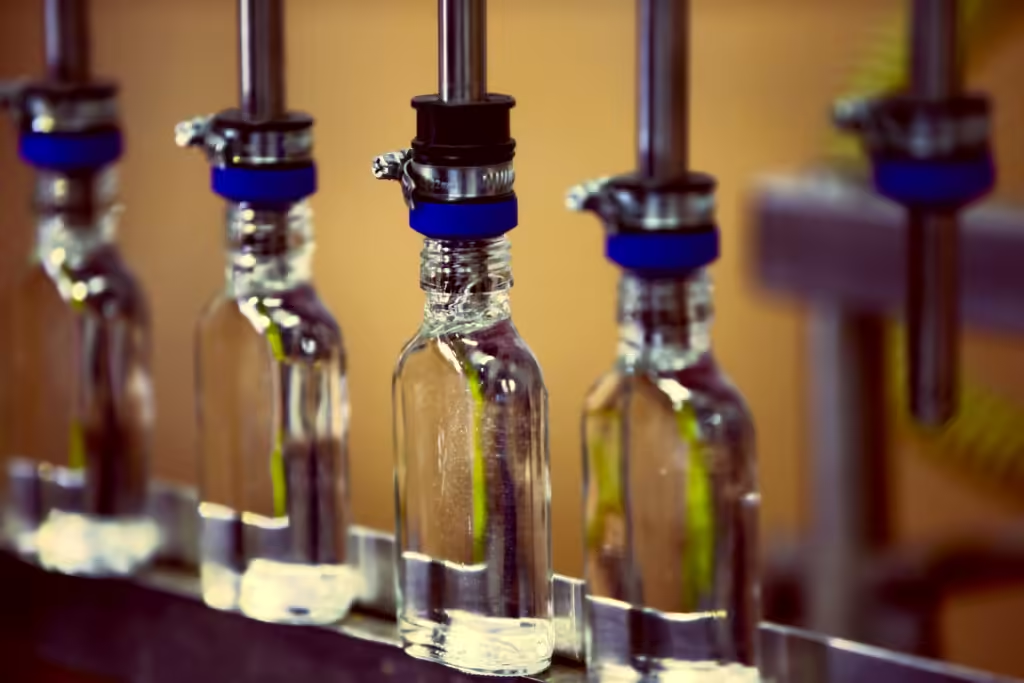
How to prevent the uneven thickness of glass bottles
Implement a strict quality control system
The key to preventing uneven thickness begins with effective quality control (QC). By catching defects early, manufacturers can ensure consistent product quality and minimize the risk of defects in the final product.
Example:
- l Regularly measuring the weight of each bottle to ensure it matches the expected weight helps detect thickness variations.
- l Manual and automated visual inspections can detect surface defects, warpages, or bubbles caused by inconsistent thickness.
- l uses specialized tools to measure the thickness of the glass at various points to ensure that the bottle meets design specifications.
Using advanced molding technology
By investing in precision molding technology, manufacturers can ensure that glass bottles have uniform thickness across the entire surface. Precision molding technology not only improves product quality but also helps to effectively scale up production.
Improve mold design and regular maintenance
The use of computer-aided design (CAD) systems can optimize mold design to ensure precise cavity dimensions for even glass distribution. A well-designed mold reduces the risk of underfilling or overfilling areas with glass, which directly affects thickness consistency.
Regularly inspect and repair molds and replace worn and defective molds.
Control cooling and temperature
Providing cooling tunnels with uniform temperature distribution allows the glass to be cooled evenly from all sides, thus minimizing the possibility of thermal stress or thickness inconsistencies.
Select quality glass raw materials
Carefully inspect raw materials for impurities such as air bubbles, foreign objects, or inconsistent batches of glass. Impurities can disrupt the flow of molten glass and cause areas of uneven thickness. Ensure batch consistency and high-quality raw materials during high-volume production.
Regularly calibrate machines for consistency
Regular calibration checks should be performed on all machinery, especially molding machines, filling machines, and sealing equipment. Calibration ensures that pressures, volumes, and flow rates are set correctly, preventing changes in bottle thickness during production.
As well as fine-tuning automated molding systems to ensure consistent pressure and material distribution. Adjusting these settings can prevent the creation of thin spots in bottles that can affect durability and appearance.

Заключение
Uneven glass bottle thickness is a common challenge in the packaging industry. By integrating precision molding, automated quality checks and better raw material sourcing, glass bottle manufacturers can significantly improve the reliability, appearance, and functionality of their products. Taking proactive measures not only reduces thickness variation but also improves the overall quality of the package, ultimately benefiting both the manufacturer and the consumer.
At Паньюпак, we have an unwavering commitment to providing superior cosmetic packaging solutions that meet the highest standards of quality, долговечность, and design excellence. With over 18 многолетний опыт работы в отрасли, we have built a reputation for producing reliable, innovative packaging for cosmetics and skin care products.
We implement rigorous quality control measures to ensure that every bottle, jar, and packaging solution meets our strict quality standards. Our state-of-the-art manufacturing facilities utilize the latest automated systems and precision molding technology to ensure consistent product quality. Связаться с нами today for packaging solutions customized to your needs.


